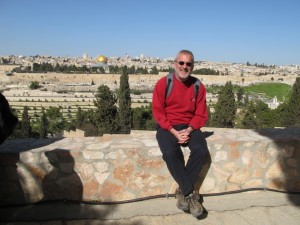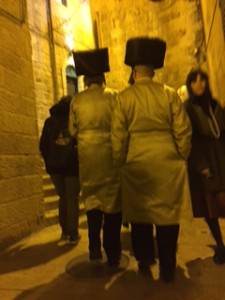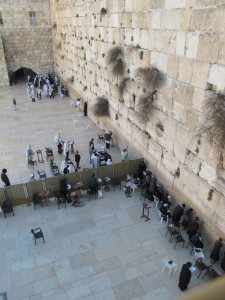Well Maia has done such a nice job describing the day to day activities of the just concluded Egypt-Jordan Tour, I will need to find some other travel perspectives to share. Of course I have a different take on some of the sights and activities and I’ll write about those in due course. My first story to share took place during the Israel extension. We had opportunity to visit the famous Western Wall on the Sabbath. The Western Wall is the only remnant of the Jewish temple destroyed by Titus in 70 AD. Unlike Christianity, the entire Jewish faith revolves around the one signature temple. So the Wall is a very holy place for them, and in consequence, the prime spot for welcoming the Sabbath – sunset on Friday. My expectations were not high or low. I took the group based on a recommendation.
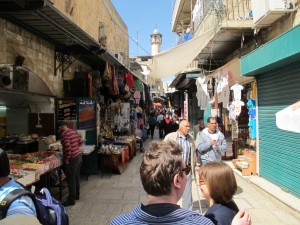
The experience was a revelation! Sometimes the BEST travel experience flow from an activity for which you have low expectations. I think it is one of the great hidden values of joining a tour. Most people don’t consider it when judging whether to travel independently or with a group. But when you go on a tour you will inevitably visit some sights or have some experiences that you wouldn’t have chosen on your own – therein lay the potential for these hidden gem serendipities.
I had that experience at the Western Wall. It started out rather boring. I had thought there would be some sort of ceremony or service to observe. But there was none. Moreover, there was a clear separation between the Jewish faithful at the wall and the tourist observer “gallery” on a fenced, elevated area about 40 yards back. I and my group joined the throngs of observers. It was interesting, but hardly memorable. The men and women are segregated left and right. Most of the action was on the men’s side.
Heads were all covered – from ball caps to yarmulkes to the elaborate Hassidic crowd. These various sects can be identified by their respective head gear: stove-top hats, fedora-types, furry looking “hat-box” style, etc. Many participants settled into small “desks” to read scriptures, many approached the wall in reverence, while still others simply stood and prayed. Contrary to my expectations, it was a relaxed and almost festive atmosphere with many men standing around chatting. Even those immersed in their scriptures or prayers were nonplussed when friends interrupted them. The orthodox crowd prayed in their characteristic rhythmic bobbing and bowing rituals and some placed their written prayers in the cracks of the wall itself. There were Jewish men of every possible persuasion from Orthodox and Hassidic to soldiers in uniform. After a while we noted that a couple of circles had formed where the men took on a more celebratory demeanor. They danced, sang, and even shouted and laughed. Eventually I noticed these circles included representation from across the social and religious spectrum: Hassidic next to soldier, Orthodox next to businessman. As I said, it was all interesting but hardly a wow travel moment.
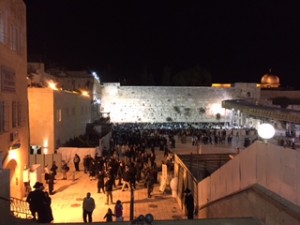 After a while I decided to find out if non-Jews were allowed to enter the enclosed Wall area. A firm believer that it is easier to ask forgiveness than permission, I simply walked on down. Turns out there are no restrictions other than covering your head. It was much more intimate and emotional to be down at the wall among the supplicants. I went to the Wall and said my own little prayer. It was surprisingly moving. Once I got down to the Wall I noticed there is a passage leading to a vaulted interior passage on the left side of the square along the Wall. I walked in as if I belonged and again no one stopped me. Inside were libraries of books, more groups of men, and most interesting of all, a section of plexiglass flooring that allowed the viewing of the wall foundations – probably another 25-30 feet below the level of the square. And the stones below were immense! Very impressive.
After a while I decided to find out if non-Jews were allowed to enter the enclosed Wall area. A firm believer that it is easier to ask forgiveness than permission, I simply walked on down. Turns out there are no restrictions other than covering your head. It was much more intimate and emotional to be down at the wall among the supplicants. I went to the Wall and said my own little prayer. It was surprisingly moving. Once I got down to the Wall I noticed there is a passage leading to a vaulted interior passage on the left side of the square along the Wall. I walked in as if I belonged and again no one stopped me. Inside were libraries of books, more groups of men, and most interesting of all, a section of plexiglass flooring that allowed the viewing of the wall foundations – probably another 25-30 feet below the level of the square. And the stones below were immense! Very impressive.
My cultural connection experience had bumped up a couple of significant notches once I became a participant and not just an observer - a principle of traveling with intent. I was now excited to get my group to participate too. On my way out of the covered passage I was spontaneously pulled into one of the celebratory circles. At first I was taken aback but quickly surrendered to the experience. I was singing (well, humming) along, dancing (sort of), and celebrating with the locals. When the circle broke up I found someone who spoke English to help explain what was happening. There was a Rabbi some decades ago who revived the ancient practice of “going out” to meet the Sabbath. The Old Testament is full of stories of singing and dancing as part of worship. Those practices has been largely lost over the centuries and this Rabbi (Shlomo something I think) had brought it back. The movement has spread and now many Jews sing and dance to welcome the Sabbath, especially at the Wall. And I was welcomed into the celebration with open arms. It was amazing. As I like to say; this is why we travel. After explaining the celebrations to me, the kind Jewish man invited me home for Sabbath dinner with his family. How I would have loved to have gone. But we had a dinner reservation that night. However, the invitation alone was a great travel moment.
I returned to my group and encouraged them to join me in going down to the Wall. Most became participants and some even joined the celebrations. I invited myself into another circle and was again warmly received. Very sababa (Hebrew for cool).
Seeing the sights of Jerusalem and Israel has been great. But for me, the defining travel moment on this tour was the human connection I experienced on the Sabbath. The openness, inclusiveness, and genuine kindness warmed my heart and revitalized my faith in humanity – at least for a few moments. What better reason could there be to travel?